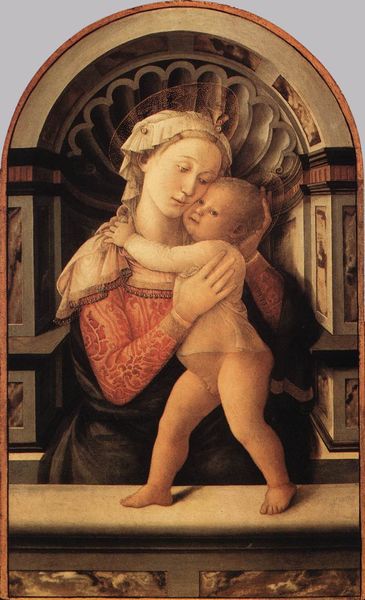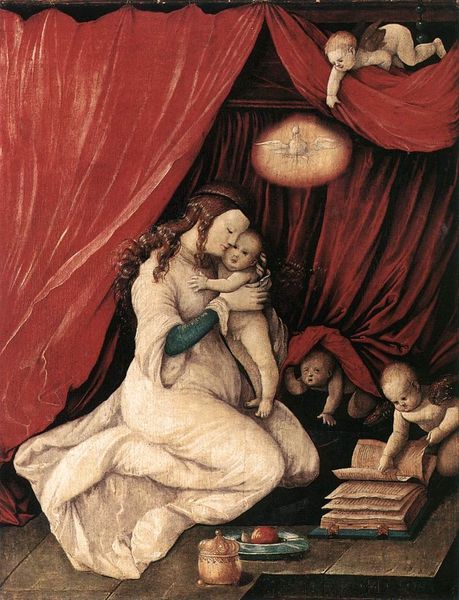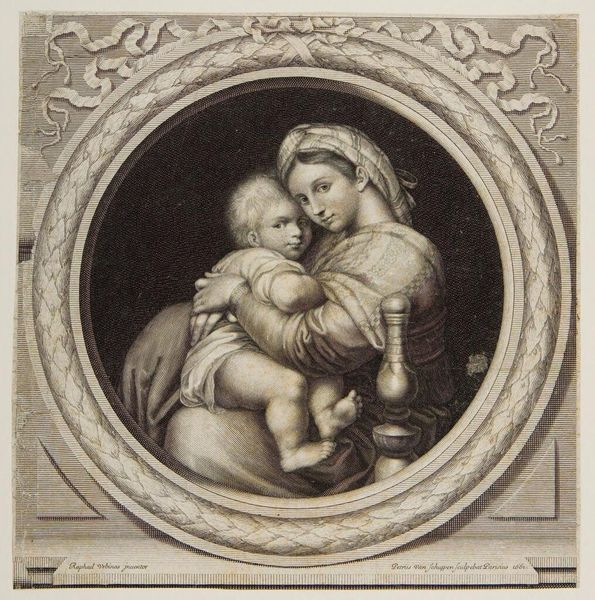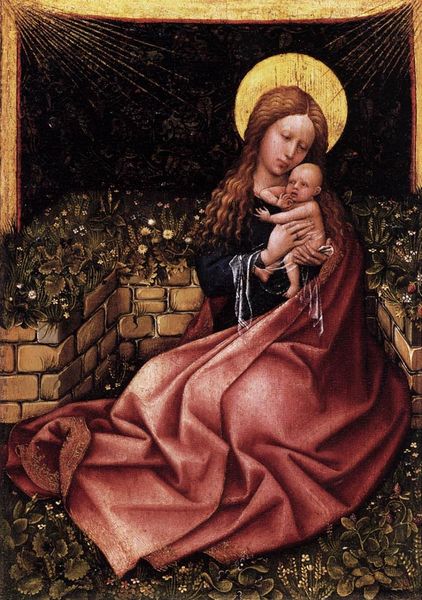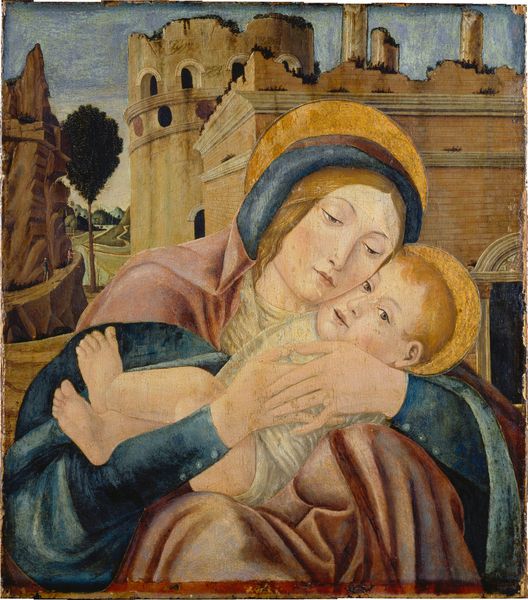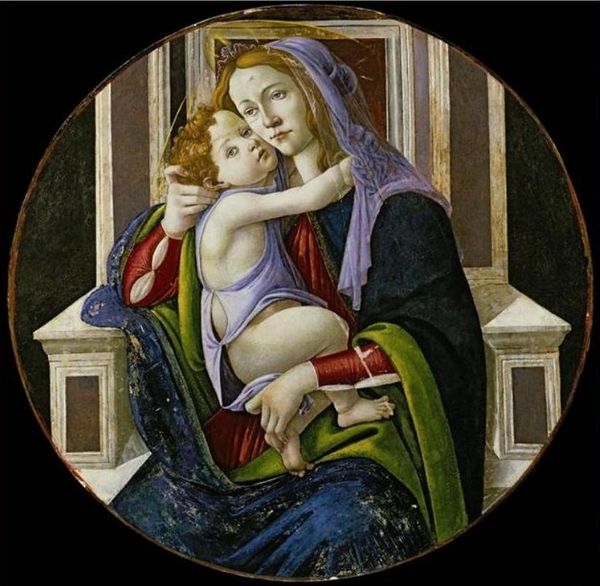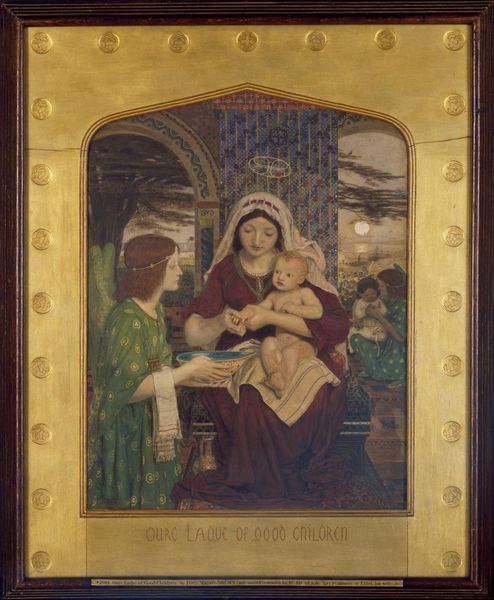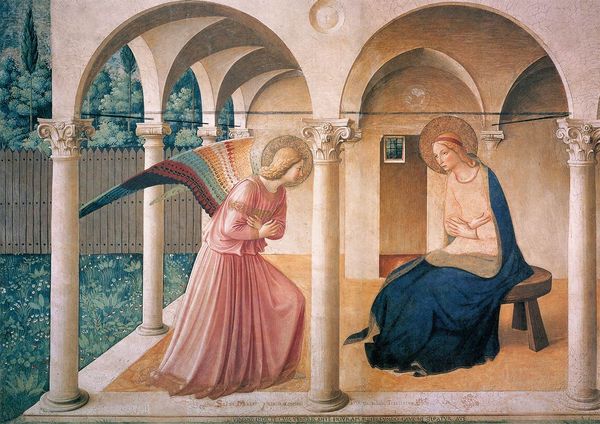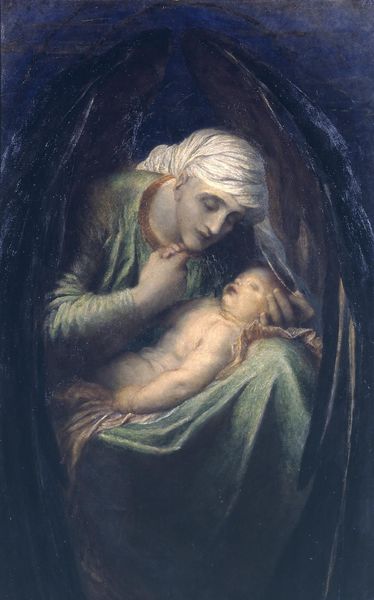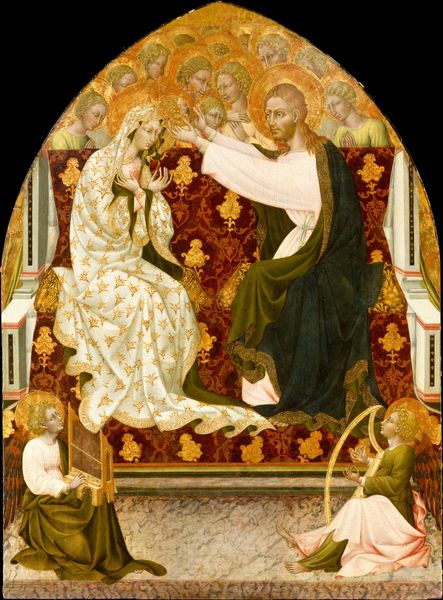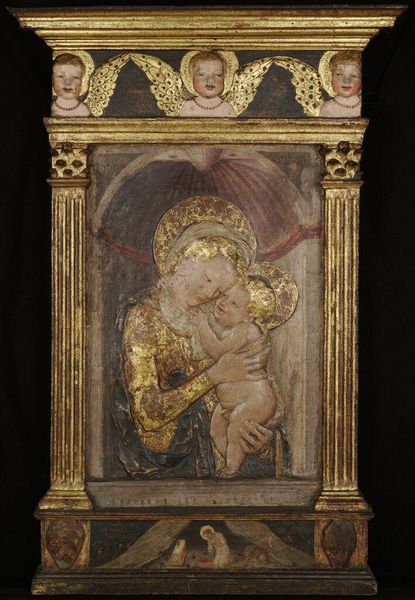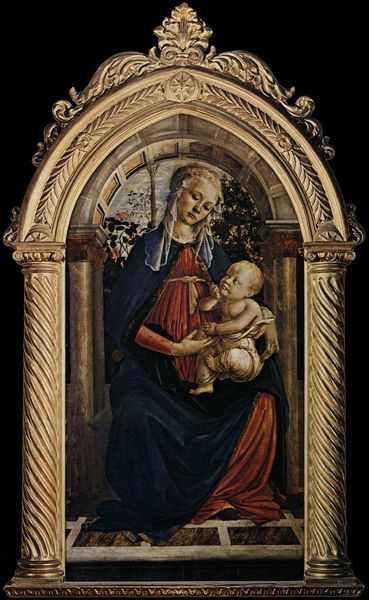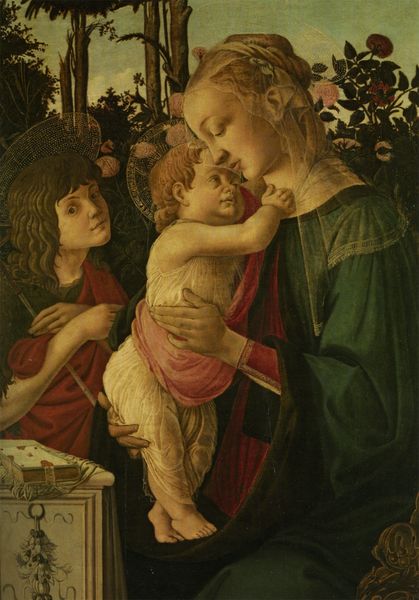
painting, oil-paint
#
portrait
#
painting
#
oil-paint
#
figuration
#
oil painting
#
portrait head and shoulder
#
intimism
#
symbolism
#
portrait art
#
watercolor
#
fine art portrait
Copyright: Public domain
Aladar Korosfoi-Kriesch painted this Madonna some time in the late 19th or early 20th century, though the exact date remains uncertain. It presents the Virgin Mary and infant Jesus in a style reminiscent of Renaissance art, but set against a rural Hungarian landscape. The work speaks to the rise of national romanticism in fin-de-siècle Europe, a cultural movement in which artists turned to their own national traditions for inspiration. The scene evokes both religious reverence and Hungarian folk life, perhaps reflecting a desire to cultivate a distinctly Hungarian national identity at a time of great social change in the Austro-Hungarian Empire. The institutional frameworks of art, such as academies and museums, played a key role in defining and promoting these national styles. To understand this work fully, research into Hungarian cultural and political history would be essential. The social conditions in which it was made are crucial to our understanding of its meaning.
Comments
No comments
Be the first to comment and join the conversation on the ultimate creative platform.
